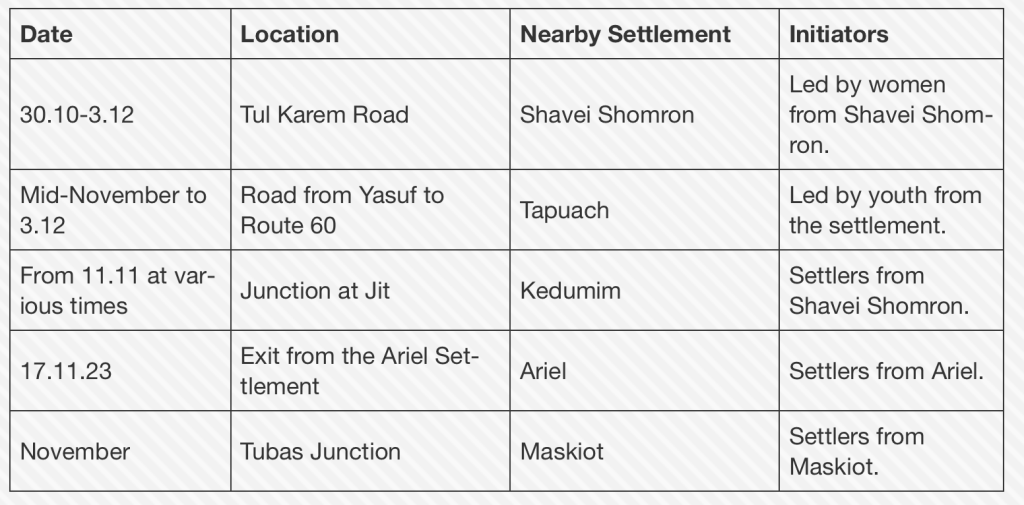Unmatched Surge in Illegal Settlement Activity against Palestinians in the West Bank Since the Onset of the Gaza War
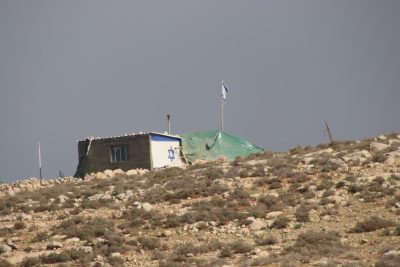
All Global Research articles can be read in 51 languages by activating the Translate Website button below the author’s name (only available in desktop version).
To receive Global Research’s Daily Newsletter (selected articles), click here.
Click the share button above to email/forward this article to your friends and colleagues. Follow us on Instagram and Twitter and subscribe to our Telegram Channel. Feel free to repost and share widely Global Research articles.
New Year Donation Drive: Global Research Is Committed to the “Unspoken Truth”
***
In the aftermath of three months of war in Gaza, we are witnessing an unprecedented surge in settlement activities, including the construction of outposts, roads, fences, and roadblocks initiated by settlers. Settlers persist in seizing control of Area C in the West Bank, further marginalizing the Palestinian presence. Alongside the ongoing settler violence, reports in November highlighted the establishment of outposts and the paving of roads, contributing to a widespread phenomenon of roadblocks. These obstacles prevent Palestinians from accessing main roads in the West Bank, and barriers are erected along these roads to impede Palestinian movement and presence in various buffer zones.
Report Highlights:
- A record number of 9 new outposts in a span of about three months.
- A record number of 18 illegal roads paved or authorized by settlers.
- The settlers returned to Amona. An outpost that was evacuated in 2017 following a court order. Settlers evacuated it in exchange for financial compensation, and the settlement of Amihai was established.
- The Huwara Bypass Road has been nearly deserted since the efforts to open it.
- A new phenomenon of settlers closing Palestinian traffic routes against military orders.
- Building fences instead of new settlements.
- A significant portion of the outposts and roads are located on private Palestinian land.
Peace Now:
“The three months of war in Gaza are being exploited by settlers to establish facts on the ground and effectively take control of extensive areas in Area C. Settlers decide where to build roads and outposts continuously, disregarding the legal status of the land. They persist in constructing outposts on private Palestinian lands, defining open areas, and restricting Palestinian movement in the West Bank. The permissive military and political environment allow the reckless construction and land seizure almost unchecked, with minimal adherence to the law. The result is not only physical harm to Palestinians and their lands but also a significant political shift in the West Bank. The unchecked rampage of the settlers must be stopped now.”
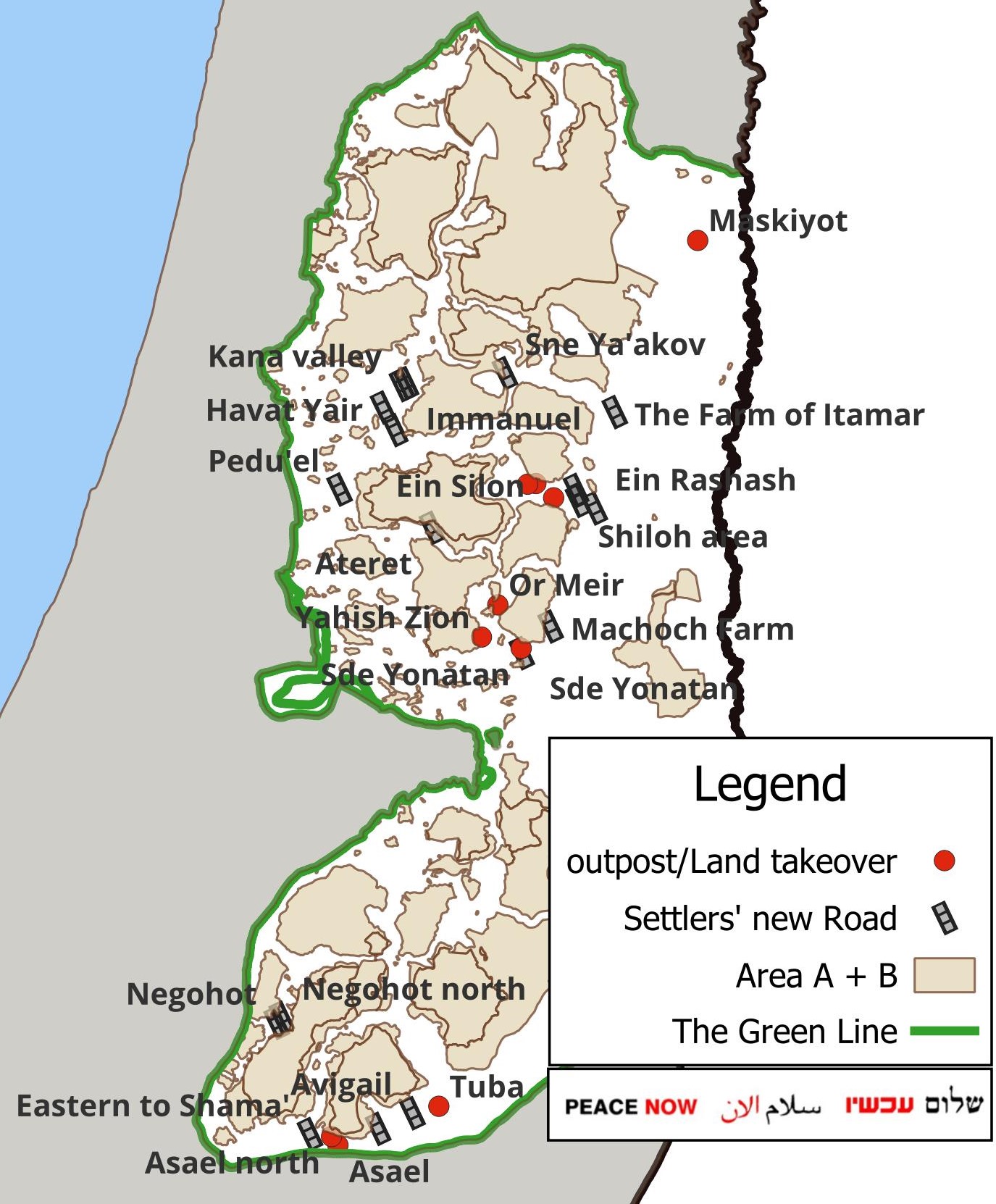
Map of new outposts, roads, and land taken over by the Settlers since October 7
Establishment of Outposts Since the Beginning of the War in Gaza
Since the beginning of the war in Gaza, settlers have established or re-established at least ten outposts, some of which were evacuated in the past and then reconstructed. Certain outposts that were established were later dismantled by the Civil Administration. For instance, two outposts were set up near the Asa’el outpost in the southern Hebron Hills region, and the outpost in Amona was rebuilt after its demolition in the wake of the war.
According to Peace Now’s Settlement Watch team’s examination, nine outposts have been established or re-established on the ground:
1. An outpost north of Asael, on a hill facing the outpost.
2. An outpost west of Amihai in the Shiloh bloc and east of the Palestinian village of Turmus Aya.
3. In the last two years, settlers have attempted multiple times to establish the Givat Haktora outpost between the Ali and Shiloh settlements on land belonging to the Palestinian village of Karyut. It was evacuated by the Civil Administration for a certain period, and after the war began, the outpost was expanded and gained access from the Shiloh settlement.
4. The reconstructed Sde Yonatan outpost, south of the Palestinian village of Dir Dibwan, on private Palestinian land.
5. The Or Meir outpost, located south of the Ofra settlement on private Palestinian land.
6. An outpost adjacent to the Tuba community in the southern Hebron Hill region.
7. The Yachish Zion outpost, near the Psagot settlement, was reconstructed on a private land after being evicted several times.
8. The outpost in Amona was rebuilt despite being demolished during the war by the Civil Administration.
9. An outpost situated to the west of the Palestinian village of Battir, located in an area designated as a UNESCO World Heritage site. Read more about this outpost, here.
As of the writing of these lines, there are at least nine outposts that have been established or reestablished and are standing on the ground.
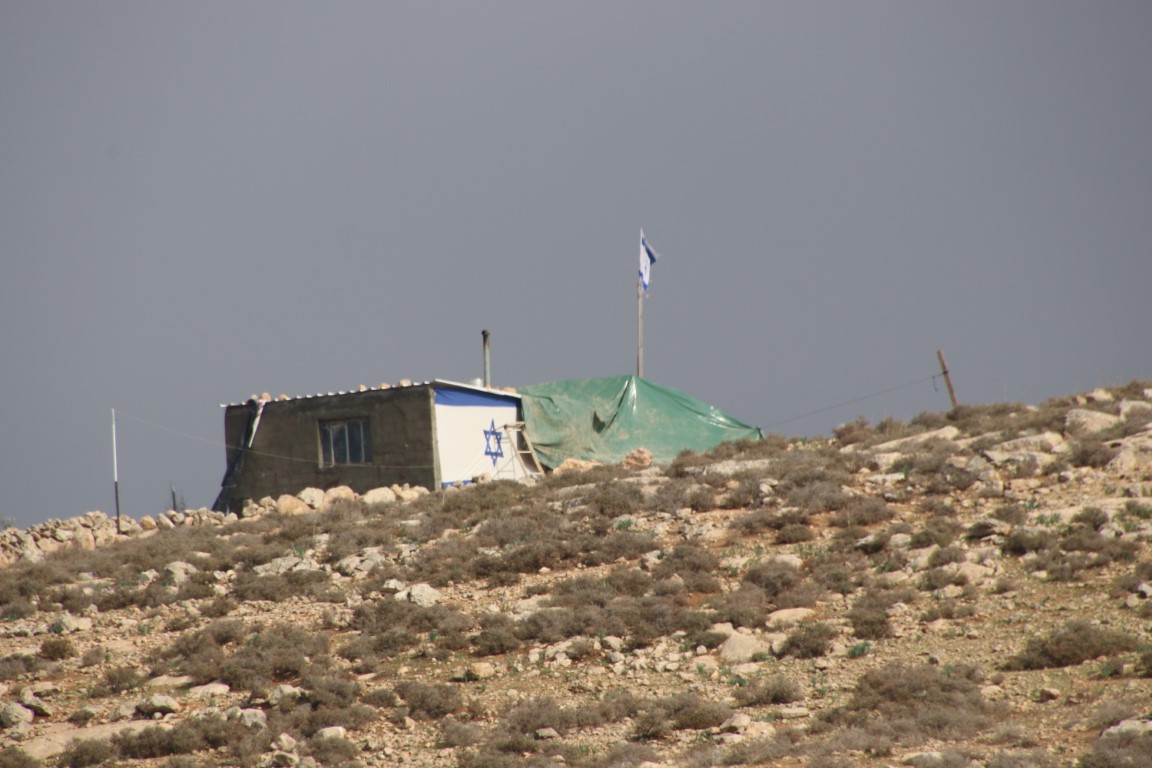
A new outpost north of the Asael outpost in the south Hebron Hill region.

The Or Meir outpost, located south of Ofra.
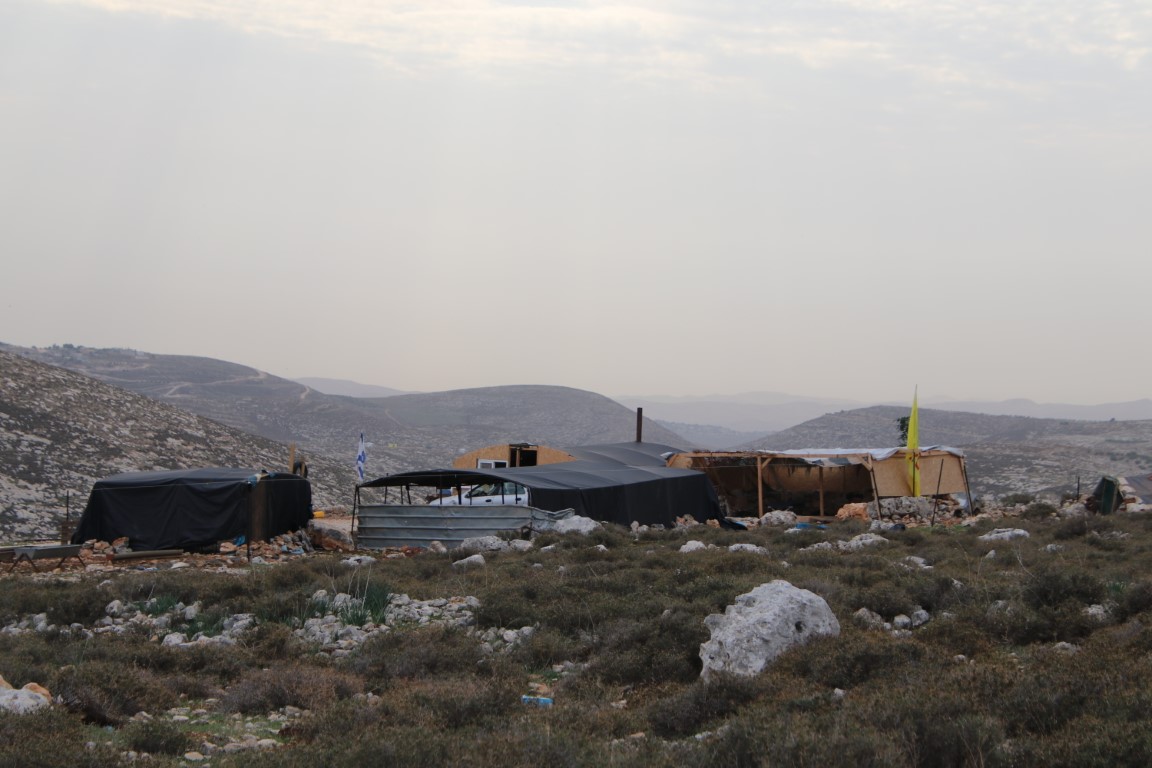
The Sde Yonatan outpost, south of the village of Dir Dibwan.
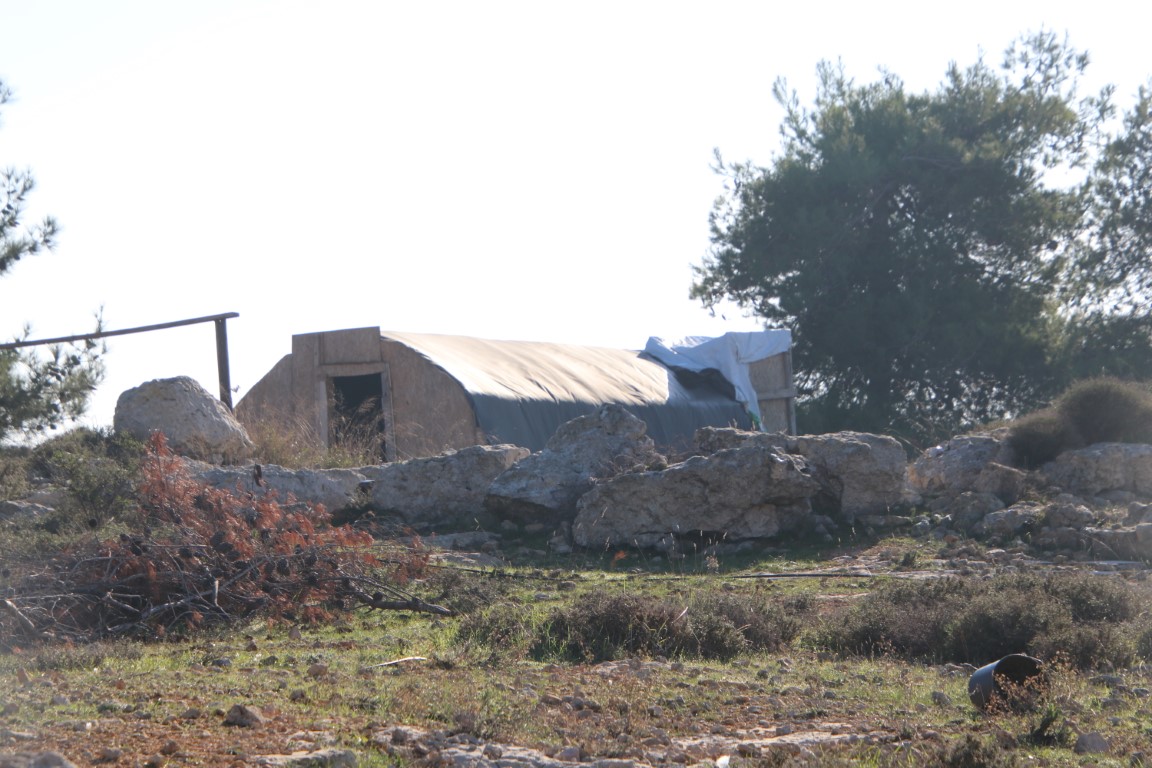
The reconstructed Yachish Zion outpost near the Psagot settlement.
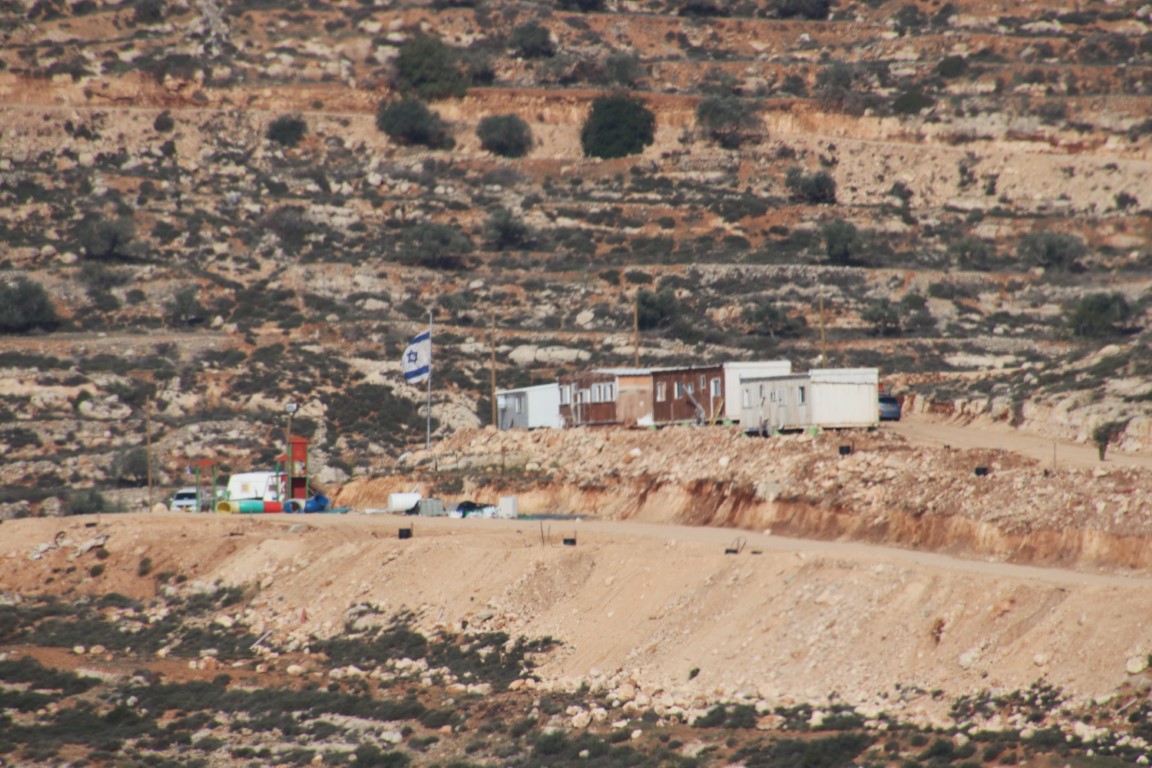
The Givat Haktora outpost between the Ali and Shiloh settlements.
Roads
The settlers’ road construction work continues at full pace, and so far, we are not aware of cases where the Civil Administration prevented or canceled paved roads. Also, to our knowledge, no heavy equipment used for road paving has been confiscated, in contrast to the widespread phenomenon of confiscating heavy equipment when Palestinians build without a permit.
So far, at least 18 new roads have been documented as breached by settlers. We estimate the actual number to be higher. The paving of these roads allows for the seizure of extensive new areas along the road’s path, marking territory inaccessible to Palestinians due to settlers’ presence and their convenient access to the area.
These are the roads and paths built since the beginning of the war:
1. Sneh Yaakov/Givaat Ronen Outpost near the village of Burin – Unauthorized road on the lands of the village of Burin.
2. Nahal (Wadi) Kana Nature Reserve – New road breach from the Alonei Shilo outpost towards the Immanuel settlement. The entire road passes through the territory of the Nahal Kana Nature Reserve. The road was initially breached in 2018, and Peace Now has filed a complaint with the police regarding the ongoing work.
3. Escape route from the Immanuel settlement.
4. Southern road to the Peduel settlement.
5. Road breaches in the Shiloh bloc.
6. Road to the Machach farm outpost in Wadi a-Siq.
7. Road to the Sde Yonatan outpost.
8. Road to the new outpost near the Negohot settlement.
9. Southern road to the Yair Farm settlement, towards the Palestinian village of Qarawat Bani Hasan on private Palestinian land.
10. Western road to the Revava settlement in an area that is partially private land.
11. Another southern road to the Palestinian village of Beit Awwa, north of the Negohot settlement.
12. Eastern road breach to the Sham’a settlement in the south Hebron Hills region.
13. Eastern road breach to the Itamar settlement and northeastern road to the Itamar farm.
14. A road breach near Ein Rashash to the Alon road. The road is near the Melech Hashalom outpost and the place where the Bedouin community was expelled at the beginning of the war.
15. A breach of a road north to the Kida East outpost in the east.
16. A breach of a southern road to the Susya settlement in the southern Hebron Hills.
17. Breach of a road near the Abigail outpost towards the east.
18. Breach of a road northwestern to the settlement of Ateret.
In total, since the beginning of the war, settlers have breached or paved at least 18 new roads.

Southern road to the Ya’ir Farm settlement.
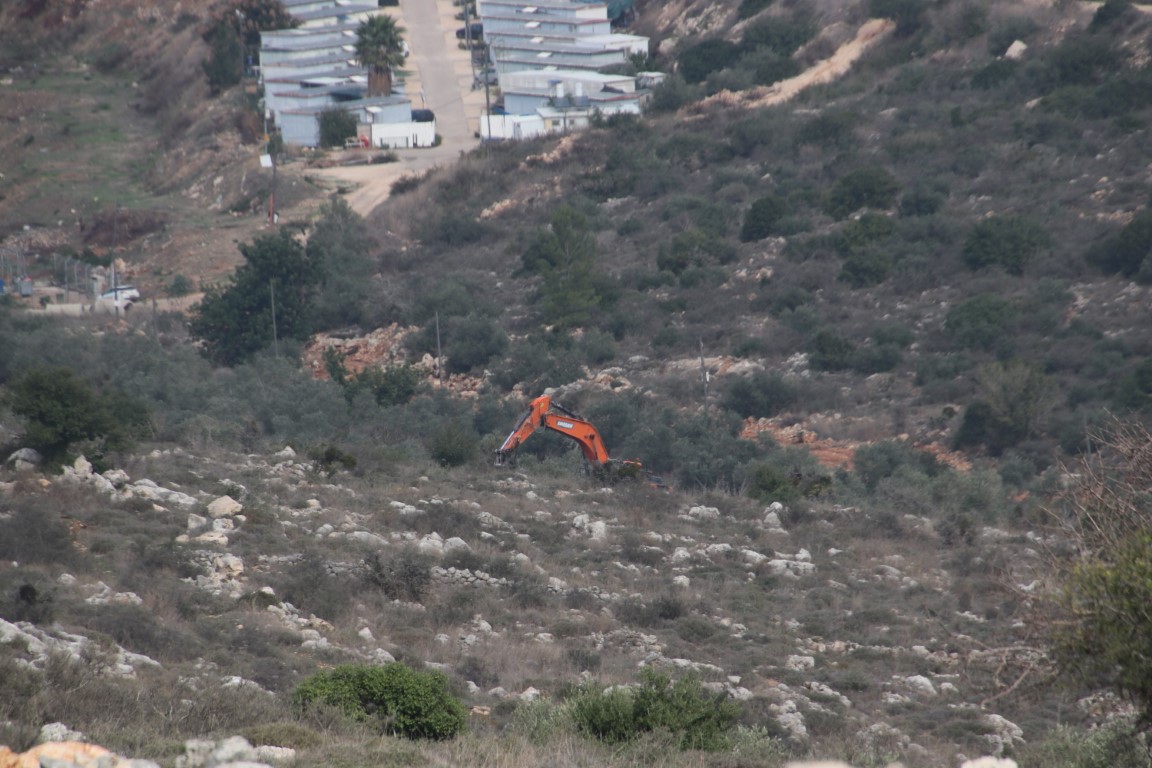
Works near the Revava settlement.
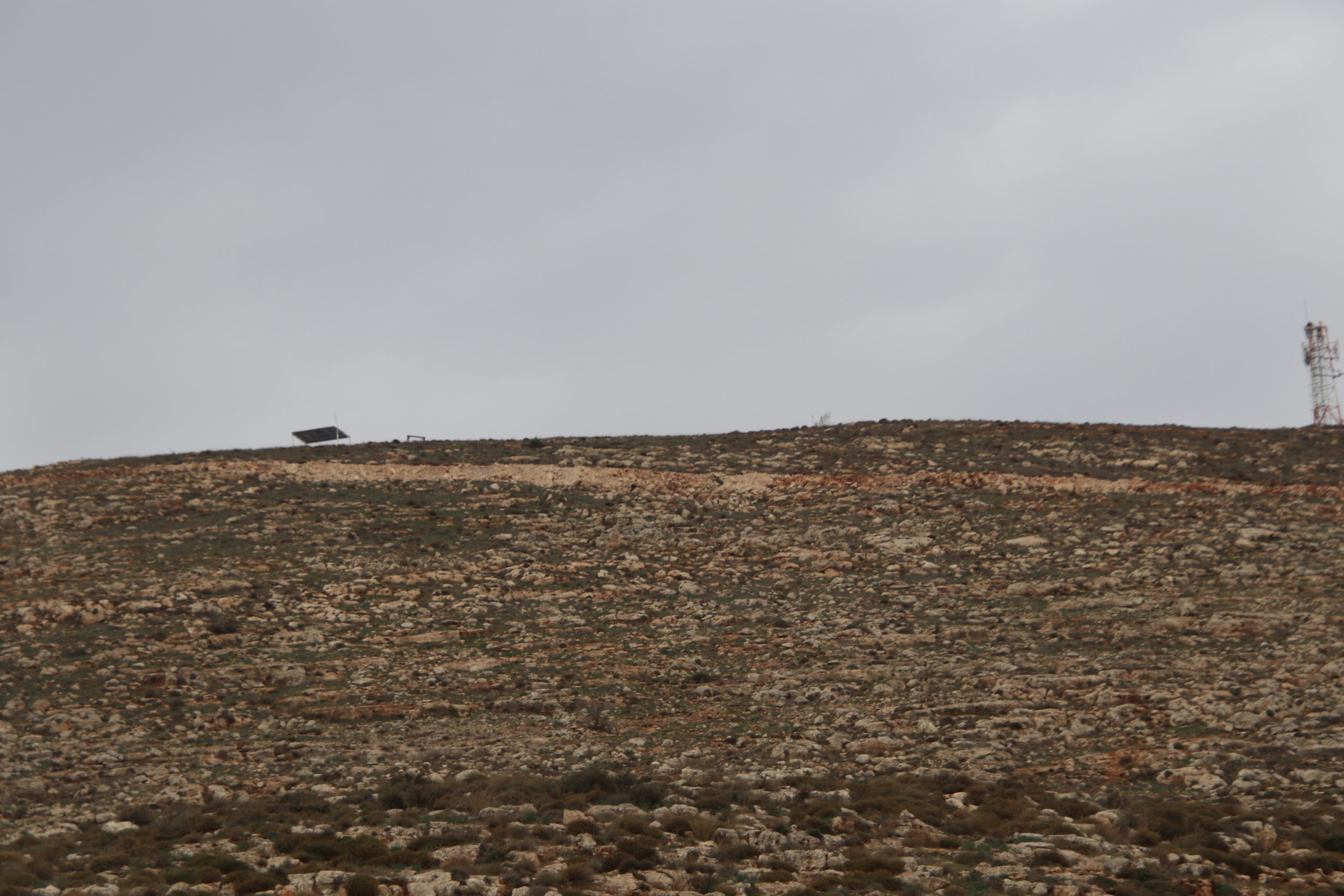
Breach of a road from the Kida East outpost towards the north.

Eastern breach to the settlement of Shama in the south Hebron Hills region.
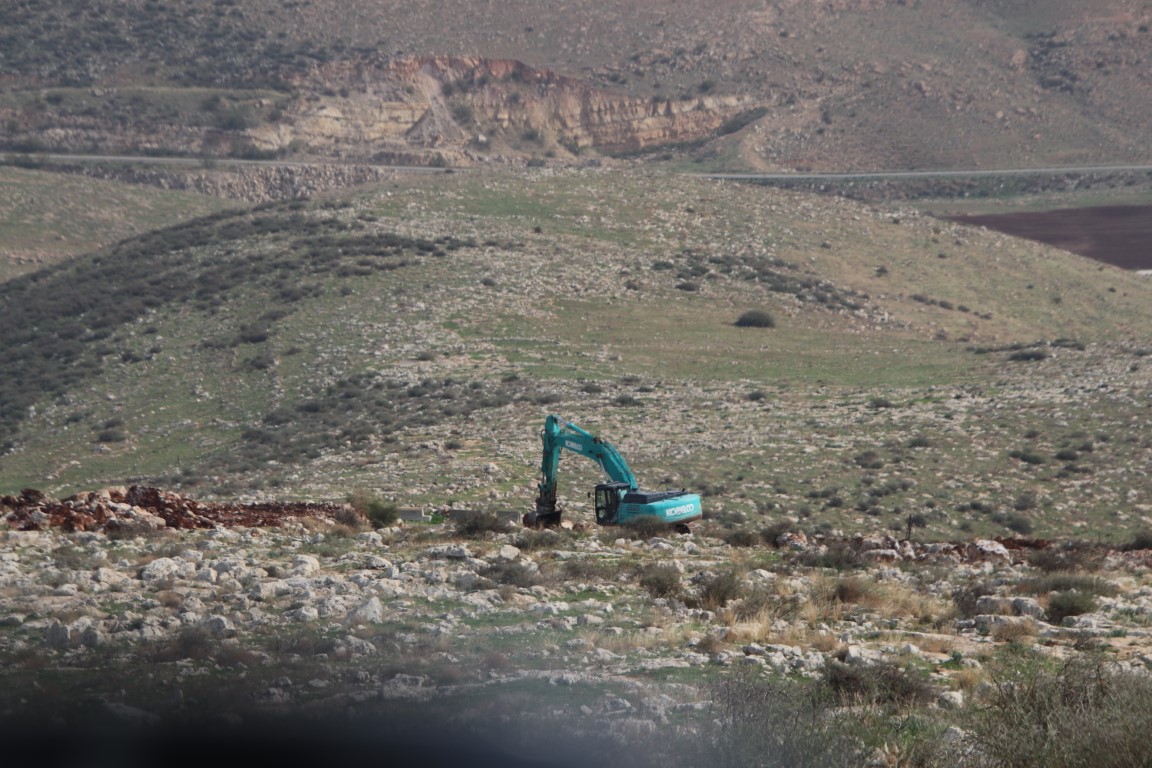
Works near the Itamar settlement.
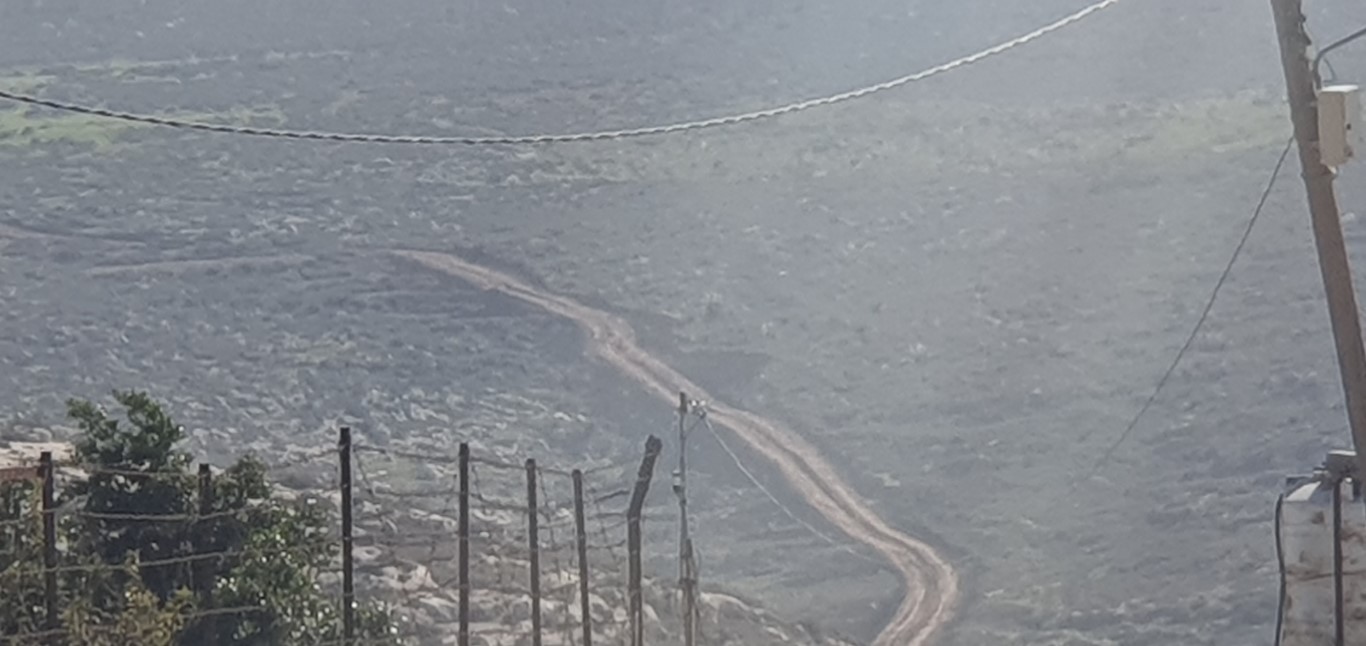
A breach road near Ein Rashash to the Alon Road.
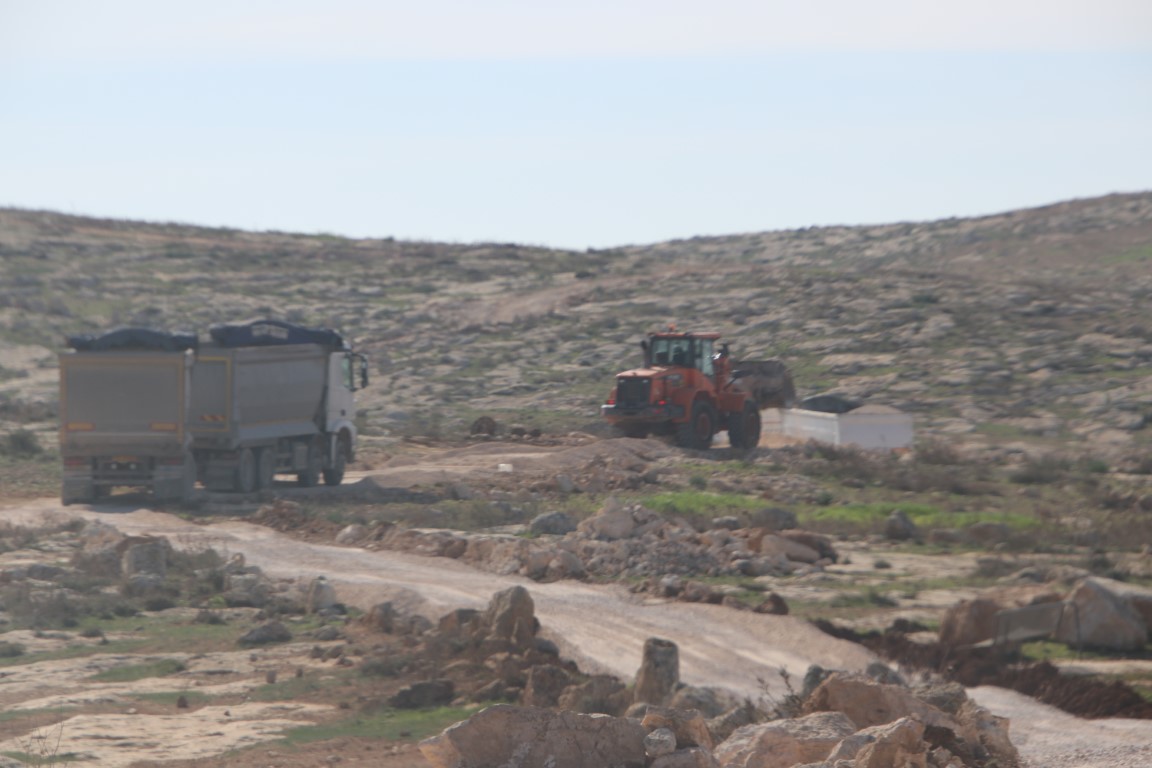
A breach of a road near Avigail outpost.
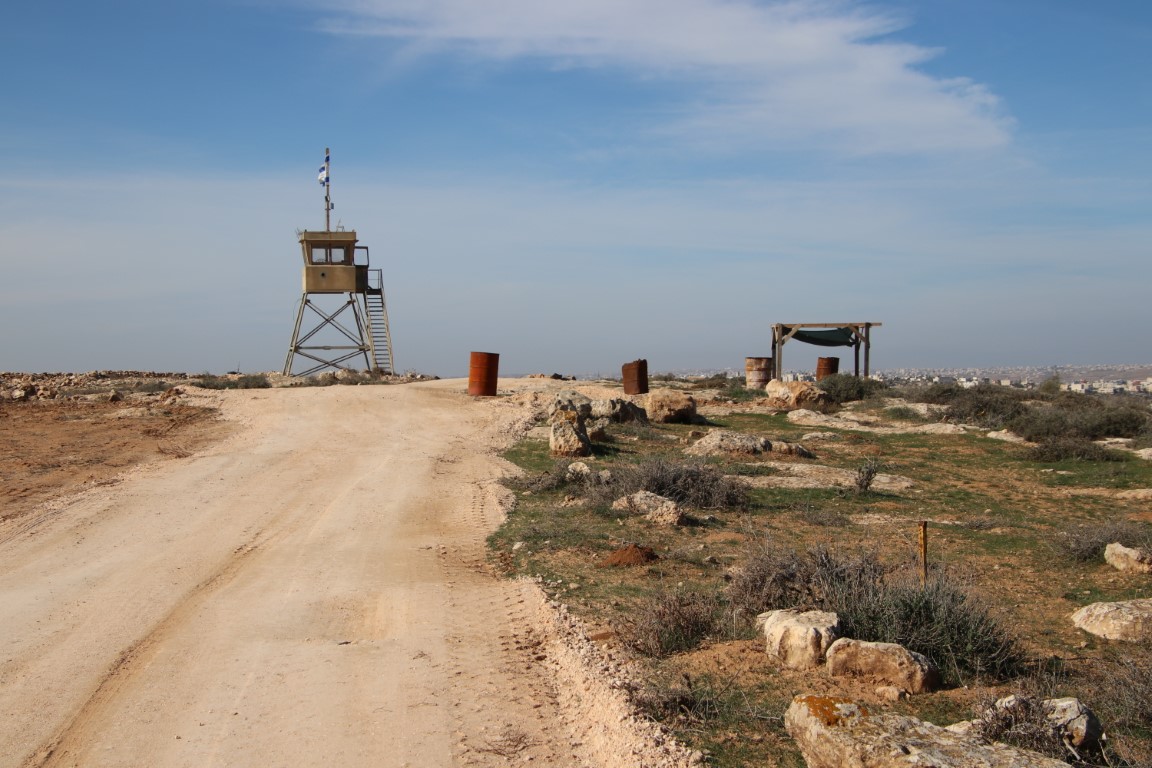
The end of a new road southern to Susiya Settlement in south Hebron Hills.
Fencing
Another means of asserting control over extensive open areas involves the construction of fences stretching for hundreds of meters and even kilometers. For example, in the second half of November, settlers began erecting fencing along the Alon Road (Route 578) in the north of the Jordan Valley. The fencing runs parallel to the Maskiot settlement southward, passing through the outpost of the Eretz Shemesh Farm and continuing another 2 kilometers south. The fencing is intended to prevent Palestinian shepherds from grazing in the area.
Additional fencing was set up near the Asa’el outpost in the south Hebron Hills region, stretching for hundreds of meters. The fencing was built along Route 317 up to the Shani Junction. Until the beginning of the war, two Palestinian Bedouin communities resided on the hill south of the road. Both communities were forcibly displaced by the settlers in October. Following this, a new outpost was established on the hill but later evicted by the Civil Administration. Instead of re-establishing the outpost (at that stage), the settlers erected fencing along the road, preventing the return of Palestinians or even their herds to the area, as they had done dozens of times in the past years.
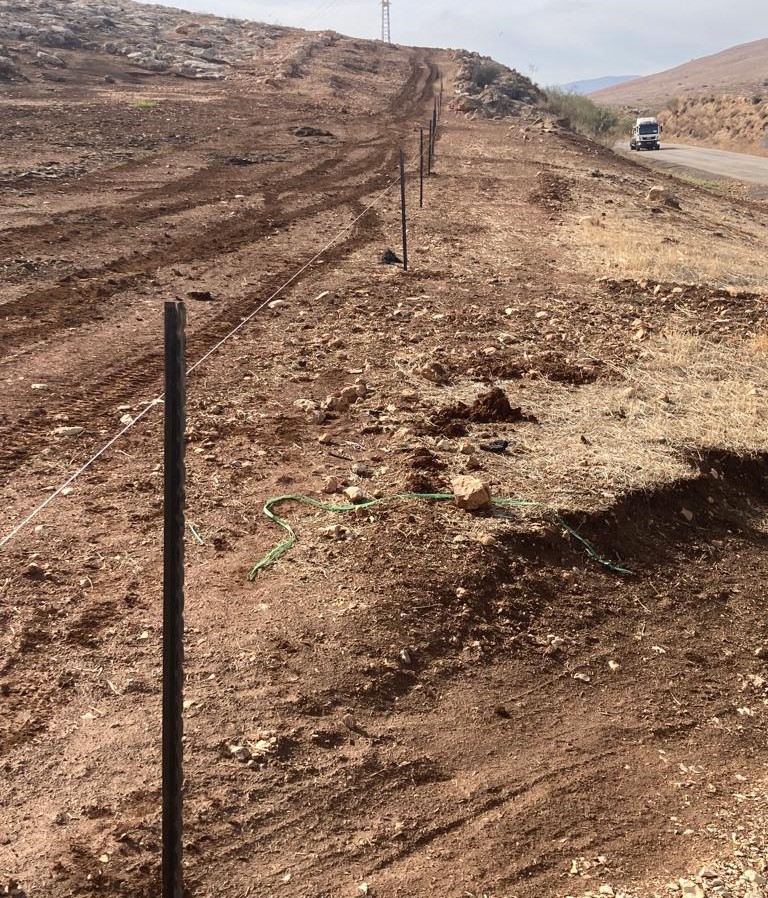
Fence along the Alon Road (Route 578) in the north of the Jordan Valley.

Territorial enclosure by settlers near the Asael outpost.
Road Closures and Blockades
During the current war in the Gaza Strip, we witness an increase in settler involvement in security and civilian decisions related to the lives of Palestinians in the West Bank. One emerging trend since the end of October is the prevention of opening roads for Palestinian vehicle use and the closure of entrances to Palestinian villages.
Since October 7th, the military has closed hundreds of entry and exit points to Palestinian towns and villages along the main transportation axes in the West Bank. Towards the end of October, the IDF began to lift some blockades, allowing slightly more freedom of movement for Palestinian vehicles on the main roads in the West Bank. Since that decision, protests and road closures have occurred, initiated by settlers who claim that the army “jeopardizes their security” by allowing Palestinians to leave their villages. In many cases, settlers, including families, women, and children, along with youth, close traffic routes. In most instances, the army secures the protests and complies with the settlers’ demand to keep the traffic routes closed.
Most protests and road closures take place near settlements located between Ramallah and Nablus. For example, throughout October, settlers from Shavei Shomron, led by settler women, protested every evening, demanding the continued closure of the Tul Karem Road (Route 57) to Palestinian traffic. Ariel residents have also prevented the opening of the road several times from the slip road to the route leading to Highway no 5.
Partial List of Closed Roads Under Settler Pressure in the West Bank
Huwara Bypass Road
One of the ongoing infrastructure projects since the beginning of the war is the Huwara Bypass Road. Under the initiative of the Minister of Transportation, Miri Regev, it was decided to advance its opening. The road was opened on 11/11/23 for the benefit of four settlements in the area of Nablus, with an investment of 350 million shekels. Since the road’s opening, settlers continue to travel through the village of Huwara, also making a political statement by claiming that “the Huwara Road belongs to Jews, and that there should be no concession on it.” As of the publication date, it appears that the bypass road is used very sparingly, with minimal daily traffic.
The Road to Yasuf Still Blocked by Settlers (05.12)
Seizure of the Ein Silon Spring
During the war, we are aware of at least one case of settlers seizing control of the Ein Silon spring, located on one of the southern roads from the village of Qusra to Highway 60, in the Palestinian village of Karyut. The road has been unused for many years and is blocked for Palestinian traffic.
Since the end of October, settlers from the Shilo area are arriving almost daily in the spring. In at least one case, settlers were documented vandalizing the structure of the spring. A group of settlers from Shiloh and the surrounding outposts has decided to transform the Ein Silon Spring into a tourist site for settlers. In recent weeks, the settlers cleared the spring and prepared it for visits. Access to it is possible by a relatively convenient dirt road.
*
Note to readers: Please click the share button above. Follow us on Instagram and Twitter and subscribe to our Telegram Channel. Feel free to repost and share widely Global Research articles.


